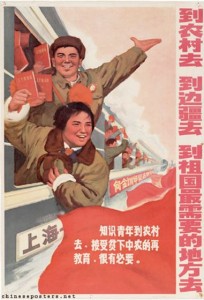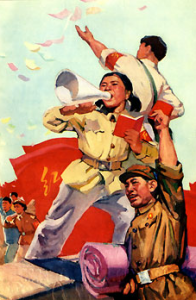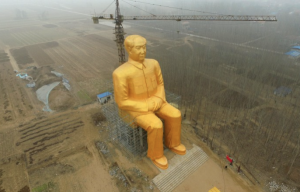
Chinese Couple at Contemporary Bridal Portrait Photoshoot 11/05/2014 http://www.loveml.net/case/qingdian/238.html
This portrait documents not only a married or maybe engaged couple but also represents an amalgam of nostalgia, national and international fashion, and a potentially faux relationship. In this contemporary Chinese bridal portrait, the photographer has his subjects, presumably a husband and wife, project their traditional Chinese heritage and history while simultaneously selectively distancing themselves from the Mao Era by connecting them to western culture and modernity.
Wardrobe: The man and women in this picture are clearly wearing qipaos or qipao-esque clothing, connecting them to the past. Knot buttons, intricate embroidery, symbolic images such as peonies, high collars, silk, and the color red, clearly found in the subjects’ clothing is specific to traditional Chinese fashion. Furthermore, the male and female though both wearing similar styles of clothing each projects a unique style. With respect to the Mao era, the complimentary differences expressed in the separate outfits of the male and female reject the androgynous restrictions and lack of personal identity represented by Mao suit and instead serve to highlight gender distinctions. Thus, the amplified sartorial aspects of this photo epitomize a pre-Mao era, and are nostalgic of an idealized past distanced from the Cultural Revolution.
Accessories: Although the clothing itself is inspired by the qipao and seems to be extracted from the more traditional and cultural memories of ancient or pre-modern China to preserve a sentimental hue of the past, the accessories donned by the subjects are a deviation from the historical thematic elements embodied by the wardrobe. While the shirts and skirts worn in the photo are antiquated, the accessories that are also prominently displayed on the body are both more modern and western, creating a common ground for contrasting ideals while also completely excluding the Mao era. The sun glasses and umbrella seem vintage, likely introduced to China in the 70s after the Cultural Revolution came to a conclusion, which brings the audience of this portrait from the qipao era to a more recent time period. But most interestingly, the red platform high heels worn by the woman seems temporally closer to the viewer. The heels are clearly 21st century, fit for any high fashion, black tie event. This portrait pulls fashion trends from both the present and the past, creating a contemporary interpretation on history in modern times.
Setting and Context: It is clear that this photograph was taken in a very posed environment, most likely at a photo studio, conveying a potential sense of artificiality. The background that consists of a solid red sheet, the manipulated lighting contribute, post-photograph filters, and high editing that are present in this portrait further contribute to the lack of natural ambiance found in traditionally western wedding photos. It is also important to consider the creator of the portrait. Most likely, the photographer is directing his subjects to his imagined ideal, not to recreate or document a genuine moment. The photographer is in command of not only adjusting general position and wardrobe but also in control of the minute, details such as finger placement, facial expression, and head tilt. Furthermore, the woman’s expression exudes forced playfulness while the man’s projects a faux a cool-ness, both faces likely heavily decorated with foundation, skin cream, and other make-up. The posed and highly controlled aspects of the portrait ranging from environment to outfits to subjects themselves suggests that the portrait may represent an illusion, that the reality for the couple may not be glamorous, wealthy, or loving.
By embracing both international and national sartorial trends, meshing idealized Chinese history with the present, recognizing the dynamic between man and woman, and superficially developing the photo, the contemporary bridal portrait rejects the Maoist era and creates an imaginary moment with falsely constructed people. persuasive conclusion
well structured and reasoned piece

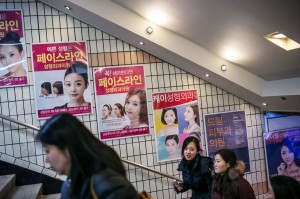
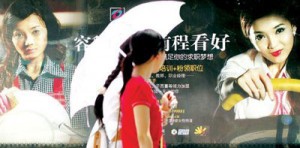
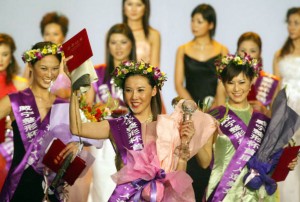
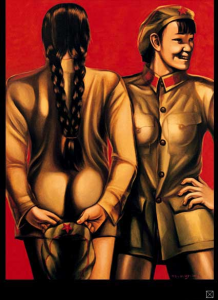

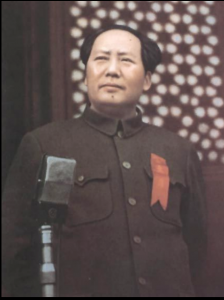
 Individual idem and inner meanings:
Individual idem and inner meanings: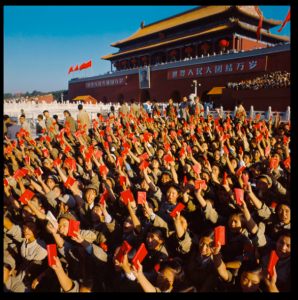 The Mao suit and Society:
The Mao suit and Society: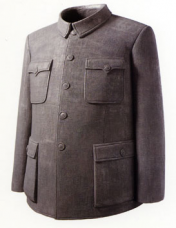 A Grey MaoSuit
A Grey MaoSuit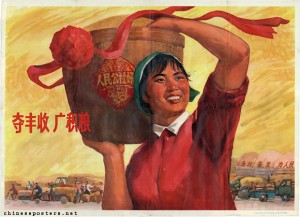 ‘Strive for an abundant harvest, amass grain 1973’
‘Strive for an abundant harvest, amass grain 1973’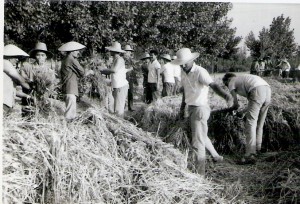 Farmers during the Cultural Revolution, 1970
Farmers during the Cultural Revolution, 1970